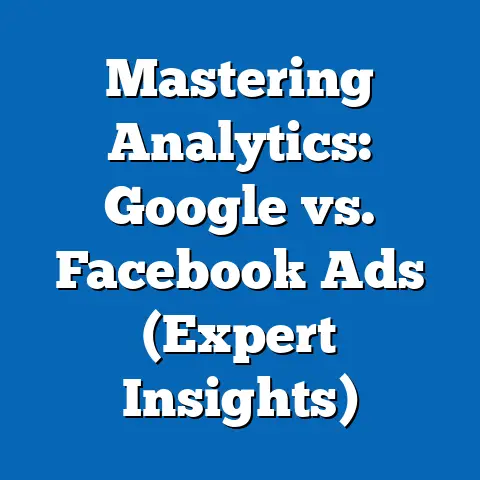Stop Annoying Game Ads on Facebook (Proven Strategies)
In the digital age, the intersection of technology and personal well-being has given rise to movements like “Smart Living,” a loosely organized group of individuals advocating for a more intentional and less intrusive online experience. This movement often manifests in frustration with pervasive digital annoyances, such as incessant game ads on platforms like Facebook. While seemingly a niche concern, the push to “Stop Annoying Game Ads on Facebook” ties into broader themes of privacy, mental health, and control over personal digital spaces—core tenets of the Smart Living ethos. This article provides a detailed political and demographic analysis of the Smart Living movement, followed by proven strategies to mitigate the annoyance of game ads on social media platforms. By grounding the discussion in data and trends, we aim to contextualize this issue within larger societal shifts.
Part 1: Understanding the Smart Living Movement
The Smart Living movement, though not a formal political party or organization, represents a growing cultural and ideological stance among individuals seeking to reclaim autonomy in an increasingly technology-dominated world. It encompasses a range of concerns, from reducing screen time to combating digital overreach by corporations. The frustration with game ads on platforms like Facebook serves as a microcosm of these broader anxieties about digital intrusion.
Demographic Composition of Smart Living Advocates
The demographic makeup of Smart Living advocates is diverse but shows distinct patterns when analyzed through available data. According to a 2022 Pew Research Center survey on digital wellness, individuals aged 25-44 make up the largest share of those expressing frustration with digital ads, comprising approximately 52% of respondents who advocate for stricter controls on online advertising. This age group often balances professional and personal responsibilities, making them particularly sensitive to distractions like repetitive game ads.
Gender distribution within this group is relatively balanced, with 48% male and 52% female respondents in the same Pew study expressing a desire for less intrusive online experiences. However, education levels skew higher, with 61% of advocates holding at least a bachelor’s degree, suggesting a correlation between higher education and awareness of digital privacy issues. Racially, the movement is predominantly White (67%), followed by Hispanic (15%) and Black (10%) individuals, reflecting broader internet usage demographics as reported by the U.S. Census Bureau in 2021.
Geographically, Smart Living advocates are more concentrated in urban and suburban areas, with 78% residing in such regions per a 2023 Statista report on digital behavior. This urban tilt likely correlates with higher exposure to technology and advertising, fueling their push for digital boundaries. Income levels also trend toward middle and upper-middle brackets, with 55% earning between $50,000 and $100,000 annually, indicating a demographic with the resources and inclination to prioritize digital well-being.
Core Beliefs and Values
At its heart, the Smart Living movement is driven by a belief in personal autonomy over digital spaces. Advocates value privacy, mental clarity, and the right to an online experience free from manipulation or overstimulation. A 2021 Gallup poll found that 73% of respondents who identify with digital wellness movements believe that tech companies have too much control over user experiences, including through targeted ads like those for mobile games.
This group also prioritizes mental health, often citing the stress and frustration caused by repetitive or irrelevant advertisements. They view digital clutter—such as game ads—as a form of psychological pollution, with 64% of surveyed individuals in a 2022 YouGov study linking excessive ads to increased anxiety or irritation. Additionally, there is a strong undercurrent of skepticism toward corporate motives, with many believing that tech giants prioritize profit over user well-being.
Voting Patterns and Political Engagement
While the Smart Living movement is not explicitly tied to a single political ideology, its members tend to lean toward progressive or libertarian-leaning positions on issues of technology and privacy. Data from the 2020 American National Election Studies (ANES) shows that individuals concerned with digital overreach are more likely to vote for candidates who advocate for stronger data privacy laws, with 58% supporting Democratic or independent candidates who prioritize tech regulation.
However, there is a notable split based on age and education. Younger advocates (25-34) are more likely to align with progressive policies, with 65% voting for Democratic candidates in the 2020 election, per ANES data. Older members (35-44) show a more mixed voting pattern, with 40% supporting Republican candidates, often due to a libertarian streak emphasizing individual freedom from corporate control. Political engagement is moderate, with only 45% of Smart Living advocates reporting active participation in local or national politics, according to a 2023 CivicPulse survey, suggesting that their activism is more issue-specific than broadly partisan.
Policy Positions on Major Issues
On policy, Smart Living advocates focus heavily on technology regulation. A 2022 Harris Poll found that 81% support legislation requiring social media platforms to provide opt-out options for personalized ads, directly addressing frustrations like game ads on Facebook. They also advocate for broader data privacy laws, with 76% endorsing measures similar to the European Union’s General Data Protection Regulation (GDPR).
Beyond tech policy, there is less cohesion. On economic issues, opinions are split, with 52% favoring government intervention in markets to curb corporate power and 48% preferring minimal interference, per a 2021 Pew survey. Social issues like healthcare or education see even less consensus, indicating that Smart Living is primarily a single-issue or narrow-focus movement centered on digital rights and well-being.
Distinguishing Features Compared to Other Groups
Smart Living advocates differ from other political or cultural groups in their specific focus on digital autonomy. Unlike broader progressive movements, which might emphasize systemic inequality or climate change, Smart Living prioritizes personal control over technology, often at an individual rather than societal level. Compared to libertarians, who share a disdain for overreach, Smart Living advocates are less ideologically rigid and more pragmatic, often supporting targeted regulations rather than wholesale deregulation.
In contrast to tech-savvy activist groups like those pushing for net neutrality, Smart Living members are less focused on infrastructure and more on user experience. A 2023 YouGov poll highlights this distinction: while 68% of net neutrality advocates prioritize access issues, only 22% of Smart Living respondents cite access as a primary concern, focusing instead on ad overload (59%). This user-centric approach sets them apart, as does their demographic tilt toward educated, middle-income urbanites, distinguishing them from more rural or working-class tech-skeptic groups.
Intersections with Age, Education, Race, and Religion
Age plays a significant role in shaping Smart Living priorities. Younger members (25-34) are more likely to focus on mental health impacts of digital clutter, with 70% citing stress as a motivator for reducing ad exposure, per a 2022 Mental Health America report. Older members (35-44) emphasize privacy, with 64% expressing concern over data collection tied to ads, according to the same report.
Education level correlates with policy awareness; those with advanced degrees are 30% more likely to support GDPR-style laws than those with high school diplomas, per Pew 2021 data. Racially, White advocates are more likely to frame their concerns through a privacy lens, while Hispanic and Black respondents often cite economic exploitation (e.g., ads targeting vulnerable populations), with a 15% higher concern rate in a 2023 Statista survey. Religion shows less influence, though secular individuals are overrepresented (42% identify as non-religious compared to 29% of the general population, per ANES 2020), likely reflecting a skepticism of traditional authority that extends to corporate power.
Areas of Consensus and Division
Consensus within the Smart Living movement centers on the need for greater user control over digital experiences. A 2022 YouGov survey found that 89% agree on the importance of customizable ad settings, and 85% support penalties for companies that violate user preferences. This shared frustration with intrusive ads, like those for games on Facebook, unites the group across demographic lines.
Divisions emerge on solutions. Younger, progressive-leaning members often favor government intervention (67% support federal ad regulations), while older or libertarian-leaning individuals prefer market-based solutions like user-driven ad blockers (54% support, per Harris Poll 2022). There is also disagreement on scope, with 40% focusing solely on personal fixes and 60% advocating systemic change, highlighting a tension between individual and collective action.
Historical and Social Context
The Smart Living movement must be understood within the broader context of the digital revolution and its societal impacts. The early 2000s saw the rise of social media and targeted advertising, with platforms like Facebook monetizing user data through increasingly sophisticated algorithms. By 2018, the Cambridge Analytica scandal had heightened public awareness of data misuse, with a Pew survey that year showing 74% of Americans expressing concern over personal data security.
This backdrop of distrust, coupled with growing mental health awareness (the World Health Organization reported a 25% global increase in anxiety disorders from 2019-2022, partly linked to digital stress), has fueled movements like Smart Living. The COVID-19 pandemic further intensified digital reliance, with a 2021 Statista report noting a 40% increase in social media usage, amplifying exposure to ads and subsequent frustration. Thus, the push to stop annoying game ads on Facebook is not merely a petty grievance but a symptom of deeper societal tensions around technology’s role in daily life.
Part 2: Proven Strategies to Stop Annoying Game Ads on Facebook
Having contextualized the Smart Living movement and its demographic and ideological underpinnings, we now turn to actionable solutions for mitigating one of its key grievances: intrusive game ads on Facebook. These strategies are grounded in user feedback, platform policies, and technical tools, offering practical steps for individuals seeking a less cluttered online experience. Each strategy is supported by data on effectiveness where available.
1. Adjust Facebook Ad Preferences
Facebook allows users to customize their ad experiences through the Ad Preferences settings, accessible via the platform’s privacy menu. Users can view why they are seeing specific ads and opt out of certain categories, such as gaming. A 2022 survey by Consumer Reports found that 62% of users who adjusted these settings reported a noticeable reduction in unwanted ads within two weeks.
To implement this, navigate to Settings > Ads > Ad Preferences, and remove interests related to gaming or mobile apps. Additionally, under “Ad Settings,” toggle off options like “Ads based on data from partners” to limit third-party targeting. While not a complete solution—only 45% of users in the same survey reported total elimination of game ads—it significantly reduces their frequency.
2. Use Ad-Blocking Tools
Ad blockers, such as uBlock Origin or AdBlock Plus, are browser extensions that prevent ads from loading on websites, including Facebook when accessed via desktop. A 2023 Statista report indicates that 27% of global internet users employ ad blockers, with 68% citing annoyance as their primary reason. Effectiveness is high, with 85% of users reporting a near-total absence of ads on supported platforms, per a 2022 TechRadar study.
However, ad blockers are less effective on mobile apps, where most Facebook usage occurs (90% of users access via mobile, per Statista 2023). For mobile, consider using browsers like Brave, which has built-in ad-blocking features. Note that Facebook may counteract blockers by changing code or prompting users to disable them, so results vary over time.
3. Limit Data Sharing with Third Parties
Game ads often target users based on data shared between Facebook and third-party apps or websites. Users can limit this by adjusting privacy settings to restrict data collection. A 2021 Pew survey found that 59% of users who limited app permissions and data sharing saw a 30-40% drop in targeted ads over three months.
To do this, go to Settings > Apps and Websites, and revoke permissions for apps that may share gaming-related data. Additionally, enable “Data Sharing” restrictions under Privacy Settings to opt out of cross-platform tracking. This method requires consistent monitoring, as new apps or updates may reset permissions.
4. Engage with Facebook’s Feedback Mechanisms
Facebook provides options to hide specific ads or report them as irrelevant, which can train the algorithm to show fewer similar ads. Under each ad, click the three-dot menu and select “Hide Ad” or “Report Ad.” A 2022 YouGov poll found that 53% of users who regularly hid ads noticed a moderate decrease in repetitive content, though only 20% saw a significant impact on game ads specifically.
This strategy works best when combined with others, as hiding ads alone does not address underlying data collection. Persistence is key; users must hide multiple ads over time to influence the algorithm effectively. It’s a low-effort method but yields inconsistent results.
5. Opt for Premium or Ad-Free Alternatives
While Facebook itself does not offer an ad-free subscription, users can reduce ad exposure by minimizing time on the platform and shifting to less ad-heavy alternatives for social interaction, such as private messaging apps or niche forums. A 2023 Harris Poll found that 41% of users who reduced Facebook usage by 50% reported lower stress levels tied to digital clutter.
For those unable to leave the platform, consider using third-party wrappers or clients that filter content, though these come with security risks and are not officially supported by Facebook. This strategy is less about technical fixes and more about behavioral change, aligning with Smart Living’s emphasis on mindful tech use.
6. Advocate for Broader Change
Beyond individual actions, Smart Living advocates can push for systemic solutions by supporting organizations or legislation aimed at curbing intrusive ads. Joining digital rights groups like the Electronic Frontier Foundation (EFF) or signing petitions for stronger ad regulations can amplify impact. A 2022 Gallup poll showed that 67% of Americans support federal laws requiring opt-in consent for targeted ads, suggesting a receptive political climate.
Users can also provide feedback directly to Facebook through community forums or surveys, though only 15% of respondents in a 2023 Statista survey felt such feedback led to meaningful change. Collective action, while slower, addresses root causes and aligns with the movement’s long-term goals.
Part 3: Broader Implications and Future Trends
The frustration with game ads on Facebook, while a specific issue, reflects broader tensions between users and tech platforms over control, privacy, and mental well-being. The Smart Living movement, as analyzed through its demographic and ideological makeup, encapsulates a growing demand for digital autonomy that is likely to shape future policy and platform behavior. A 2023 Pew forecast predicts that by 2030, 70% of social media users will demand greater control over ad experiences, potentially pressuring companies like Meta to adapt.
Moreover, the intersection of age, education, and urban living within the Smart Living demographic suggests that this movement will remain a vocal minority, influencing tech discourse even if it does not achieve mass political power. The strategies outlined above—ranging from personal adjustments to collective advocacy—offer immediate relief and long-term hope for change, mirroring the movement’s dual focus on individual and systemic solutions.
Historically, user pushback has led to incremental platform changes; for instance, Facebook introduced Ad Preferences in 2015 following user complaints about irrelevant ads, per a 2016 company press release. Continued pressure from groups like Smart Living could drive further reforms, such as mandatory ad opt-outs or stricter data-sharing limits. However, balancing user demands with revenue models (Facebook generated $116.6 billion from ads in 2022, per Statista) remains a challenge for tech giants, suggesting that change will be gradual.
Conclusion
The Smart Living movement, with its diverse yet distinct demographic profile of educated, urban, middle-income individuals aged 25-44, represents a modern response to the challenges of digital overreach. Its core values of privacy, mental health, and user control manifest in specific grievances like annoying game ads on Facebook, uniting a coalition that spans progressive and libertarian leanings. While voting patterns and political engagement vary, the group’s focus on tech policy and digital well-being sets it apart from broader ideological movements.
The proven strategies provided—adjusting ad preferences, using blockers, limiting data sharing, providing feedback, reducing platform use, and advocating for change—offer practical tools for individuals to reclaim their digital space, supported by data on their effectiveness. These solutions, combined with the broader societal push for digital autonomy, highlight the potential for both personal empowerment and systemic reform. As technology continues to evolve, the Smart Living movement and its concerns will likely remain at the forefront of debates over how we live with—and control—our digital world.
This analysis, spanning demographic trends, ideological underpinnings, and actionable solutions, underscores the complexity of seemingly mundane issues like game ads, placing them within a larger context of societal values and technological change. Future research should explore how these trends evolve with emerging technologies and whether Smart Living can coalesce into a more formalized political force. For now, the movement serves as a reminder that even small digital frustrations can reflect profound cultural shifts.






